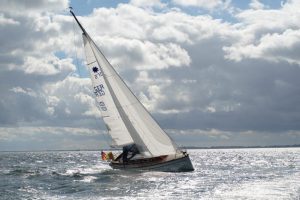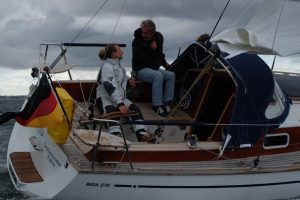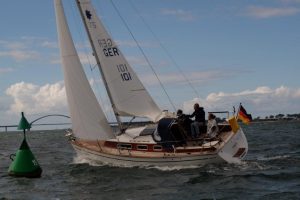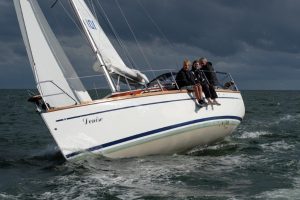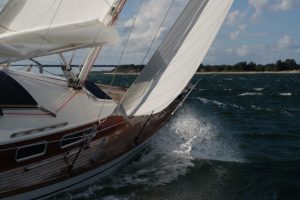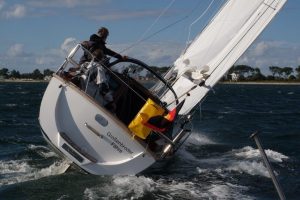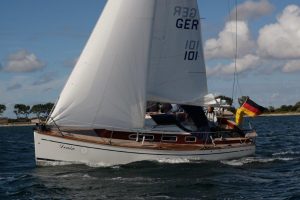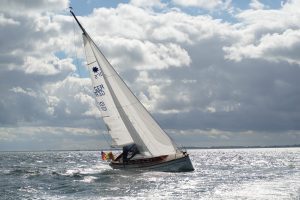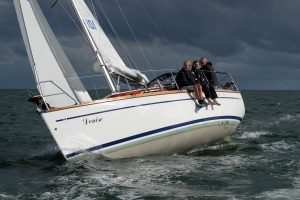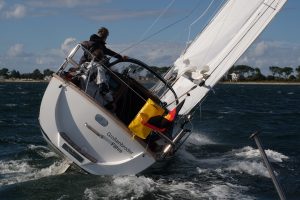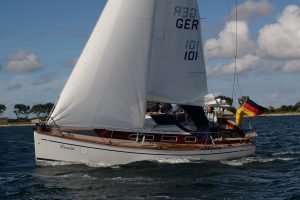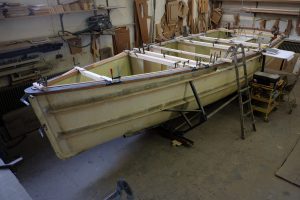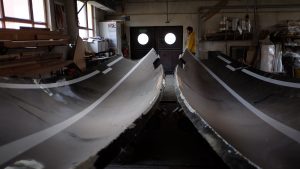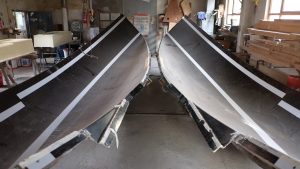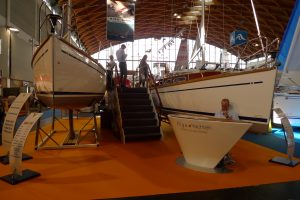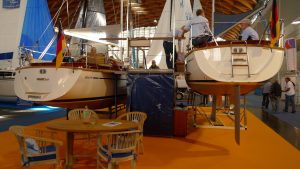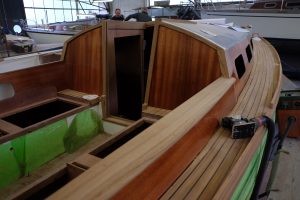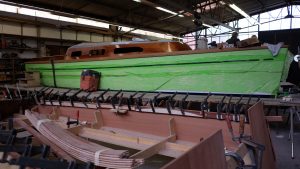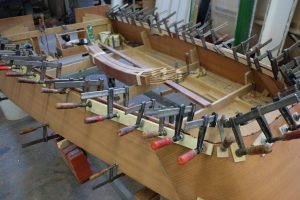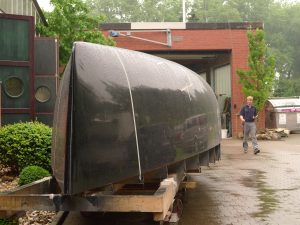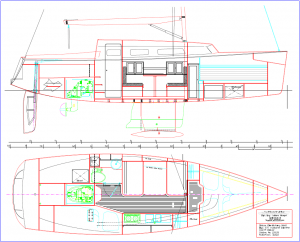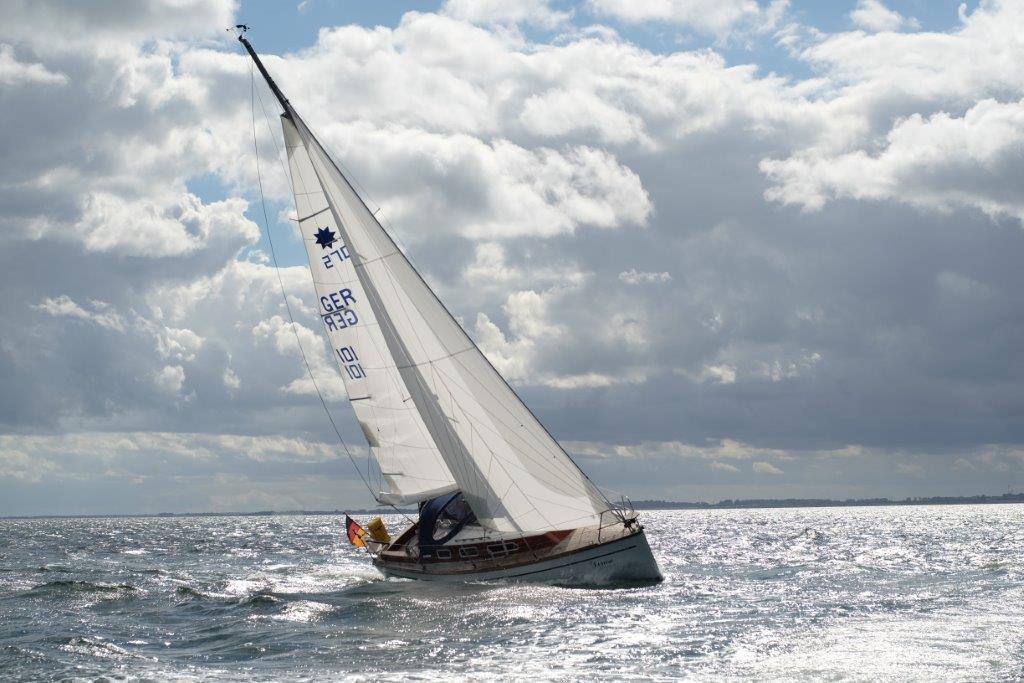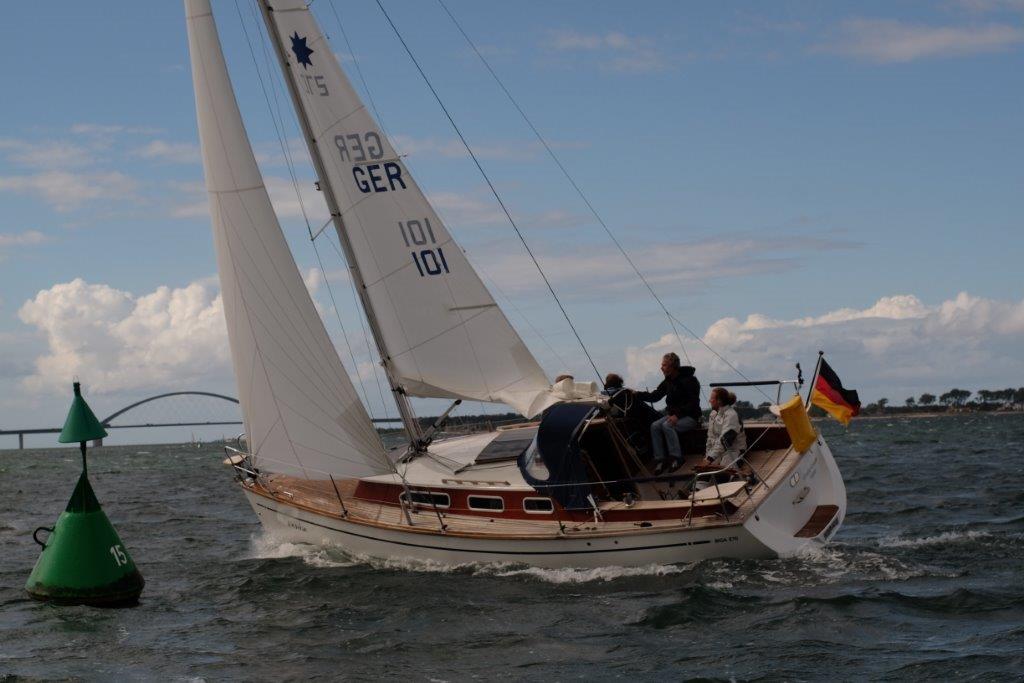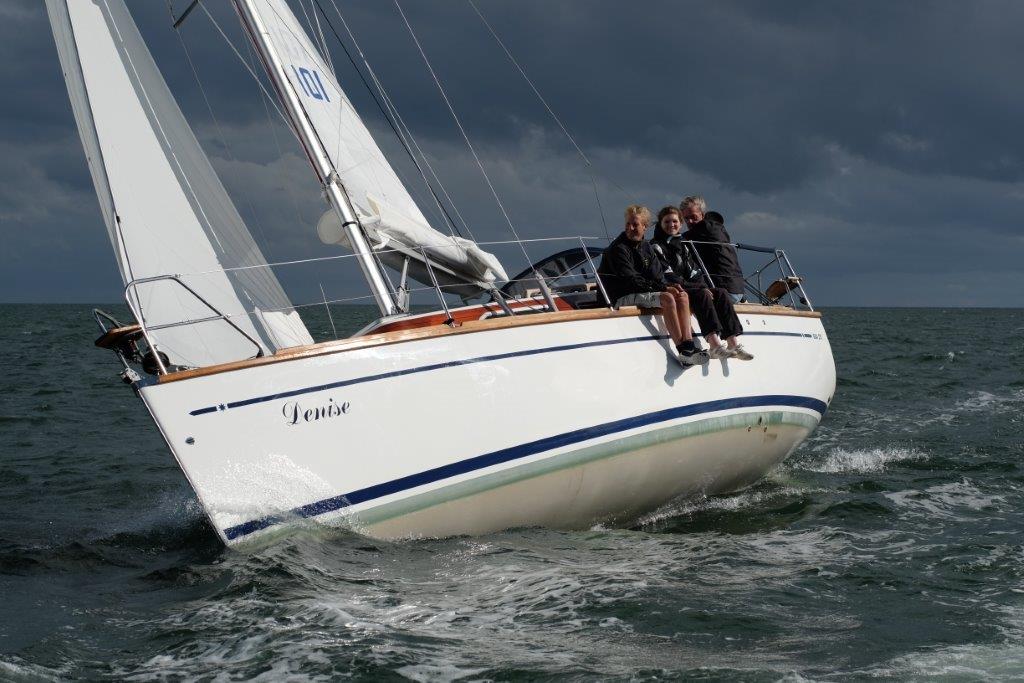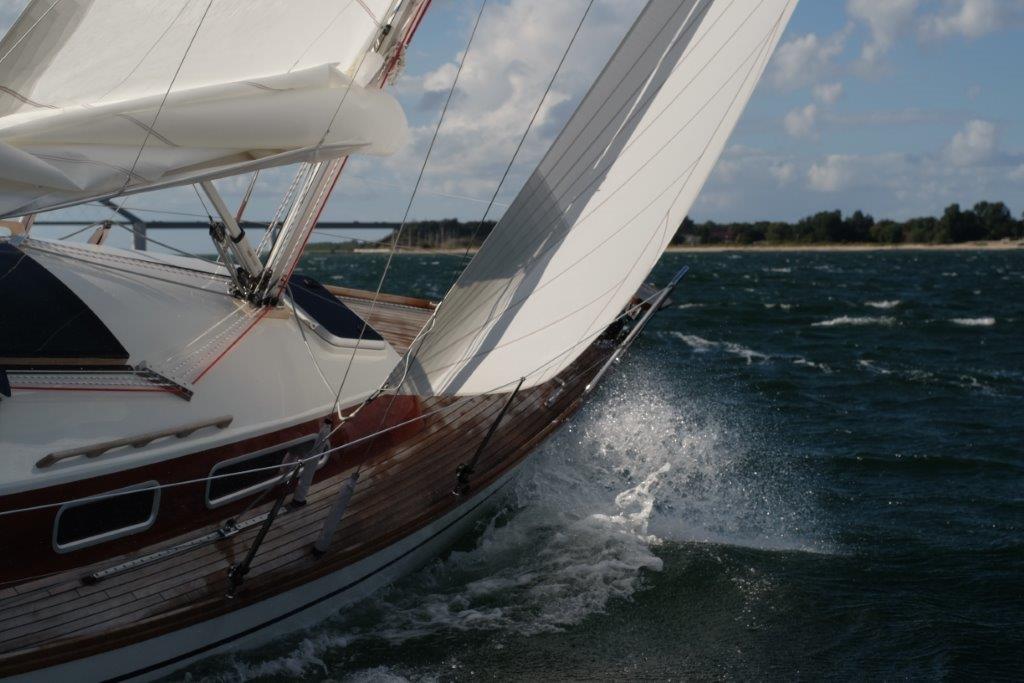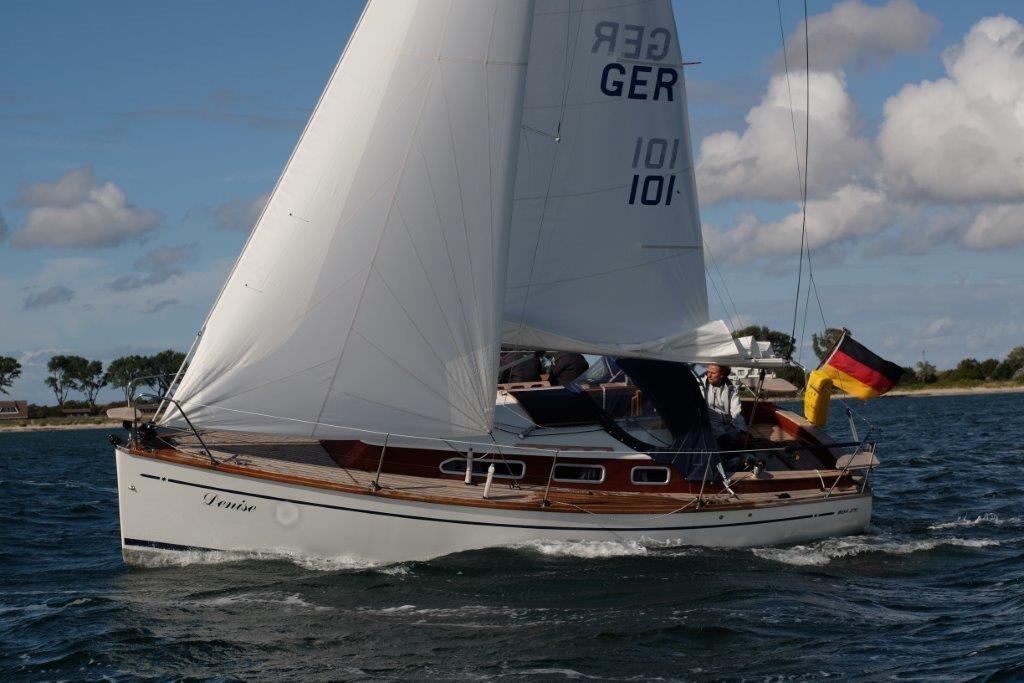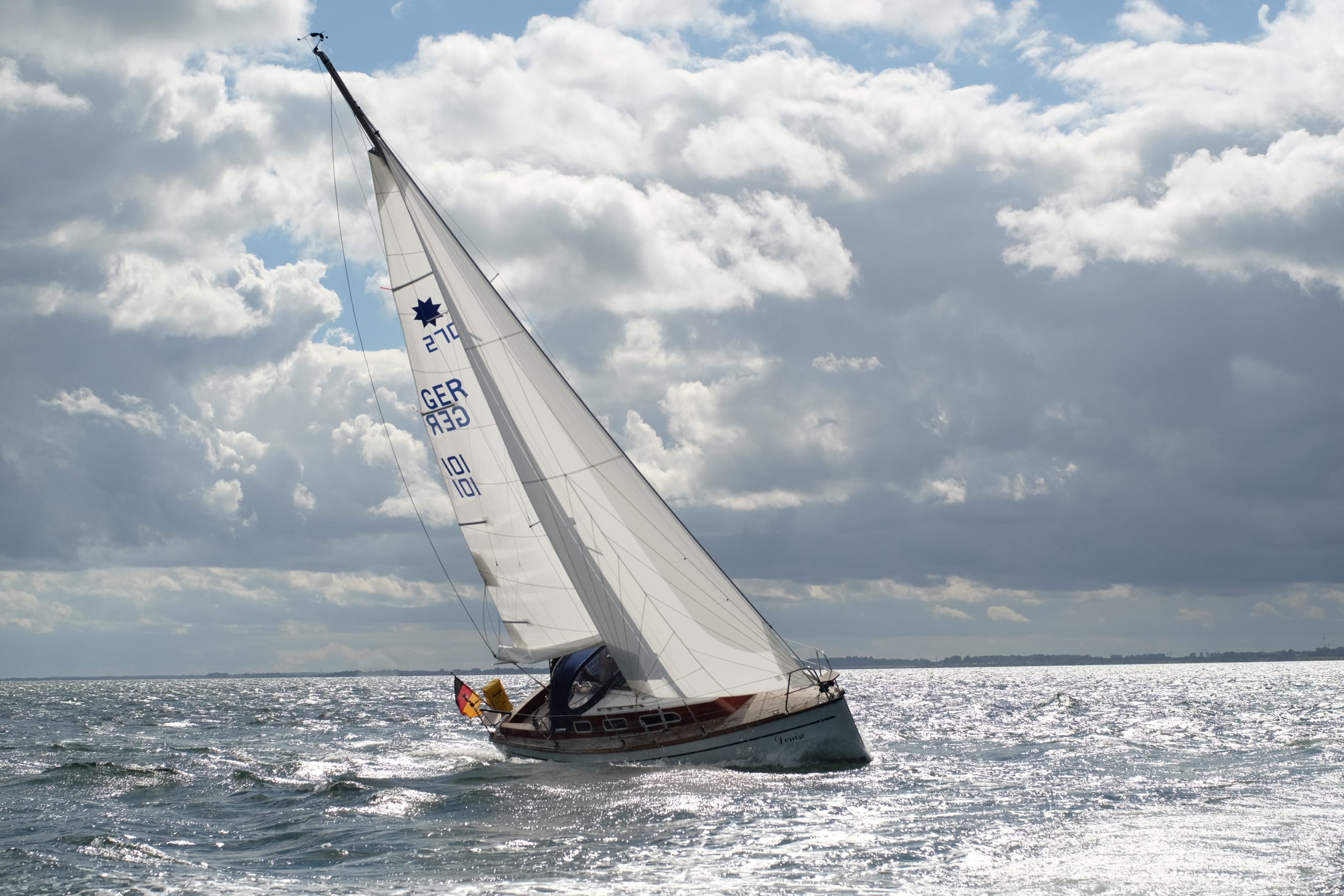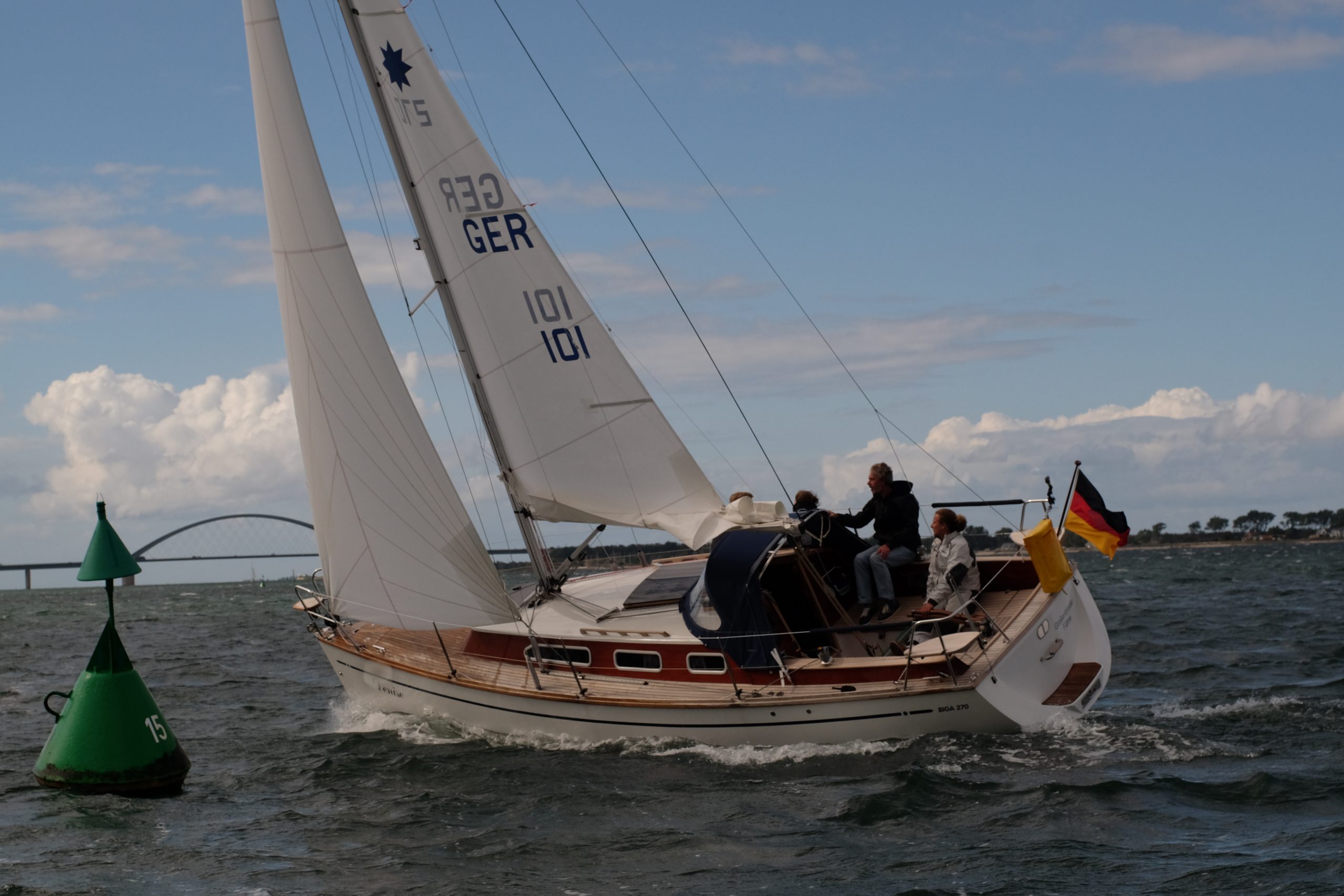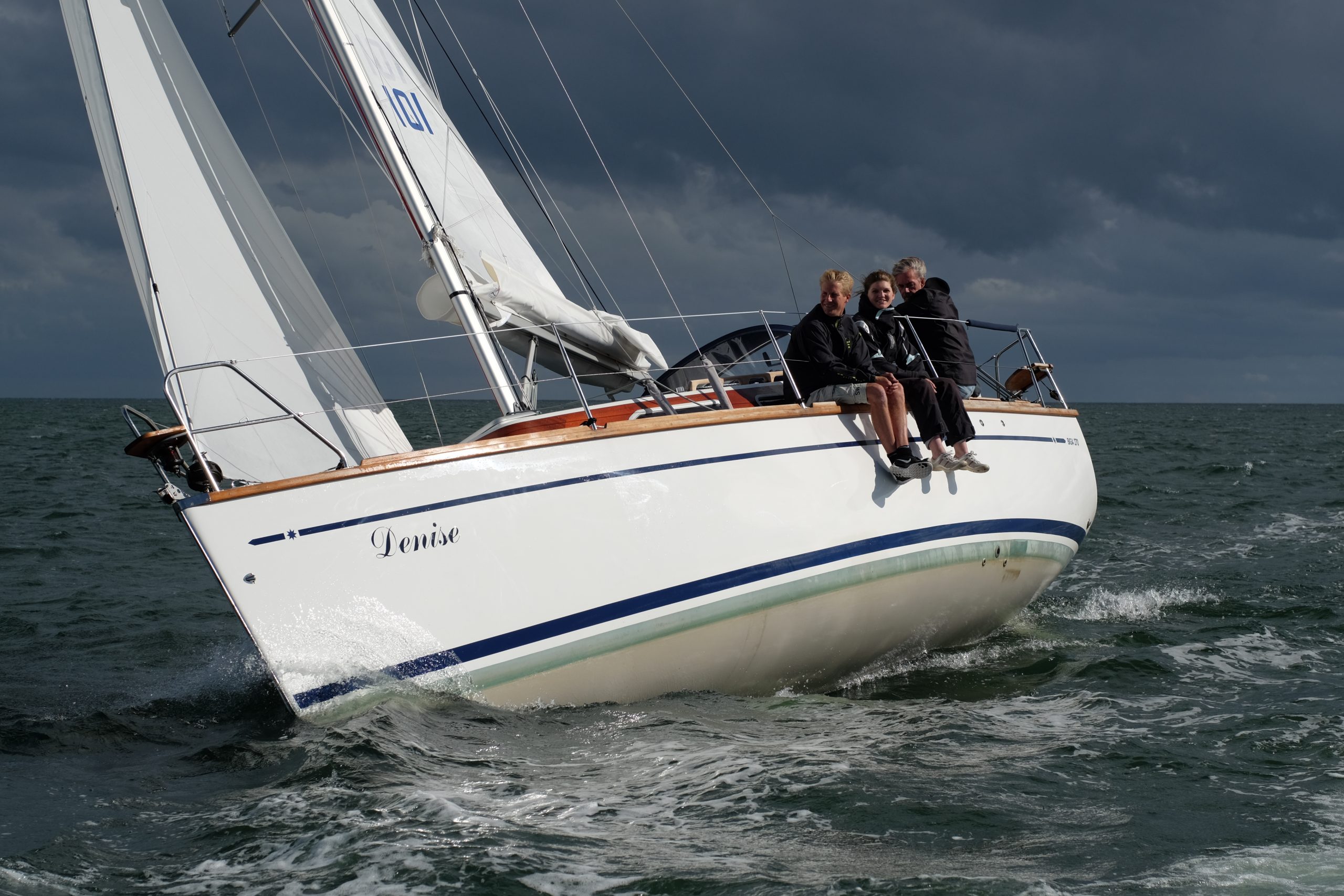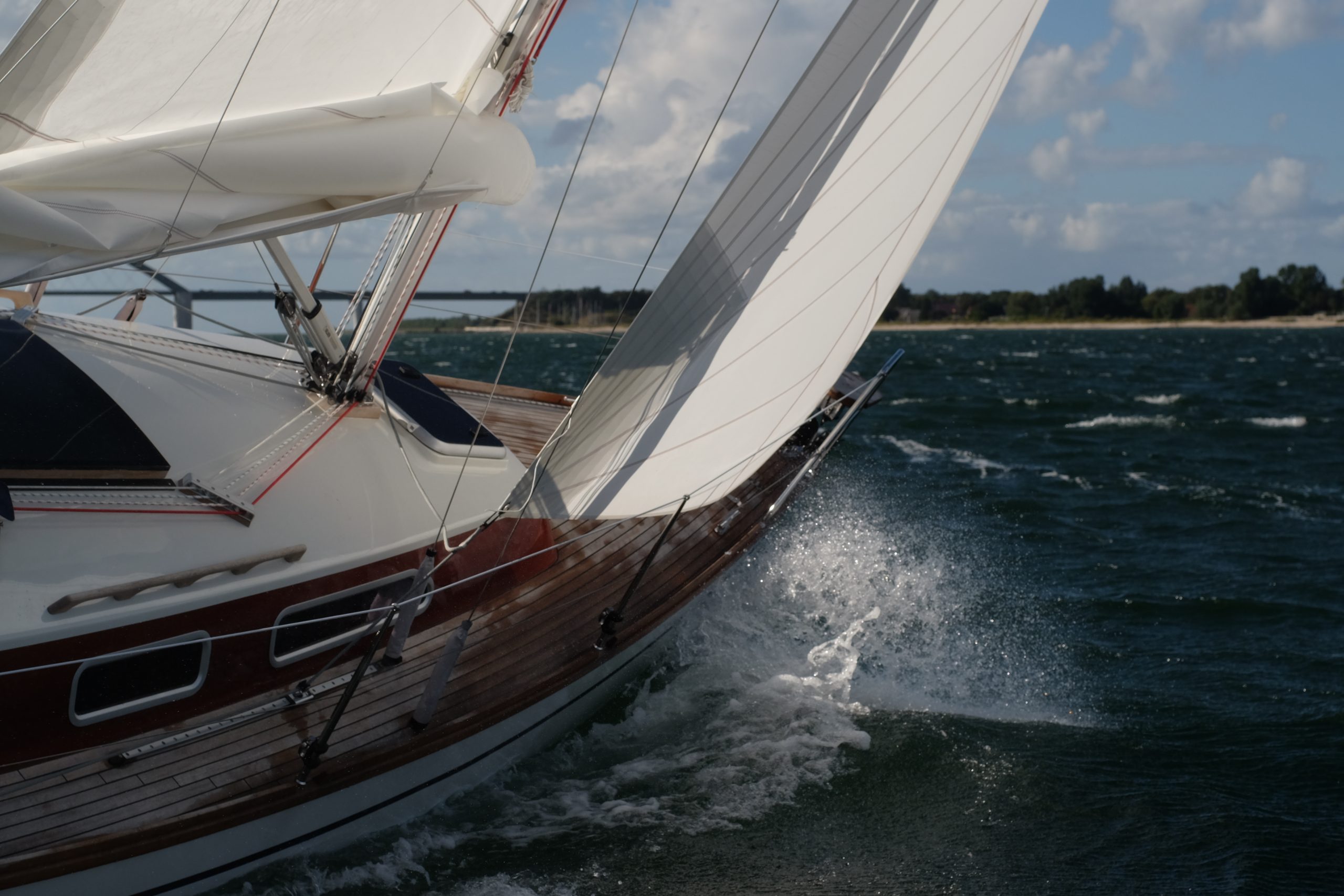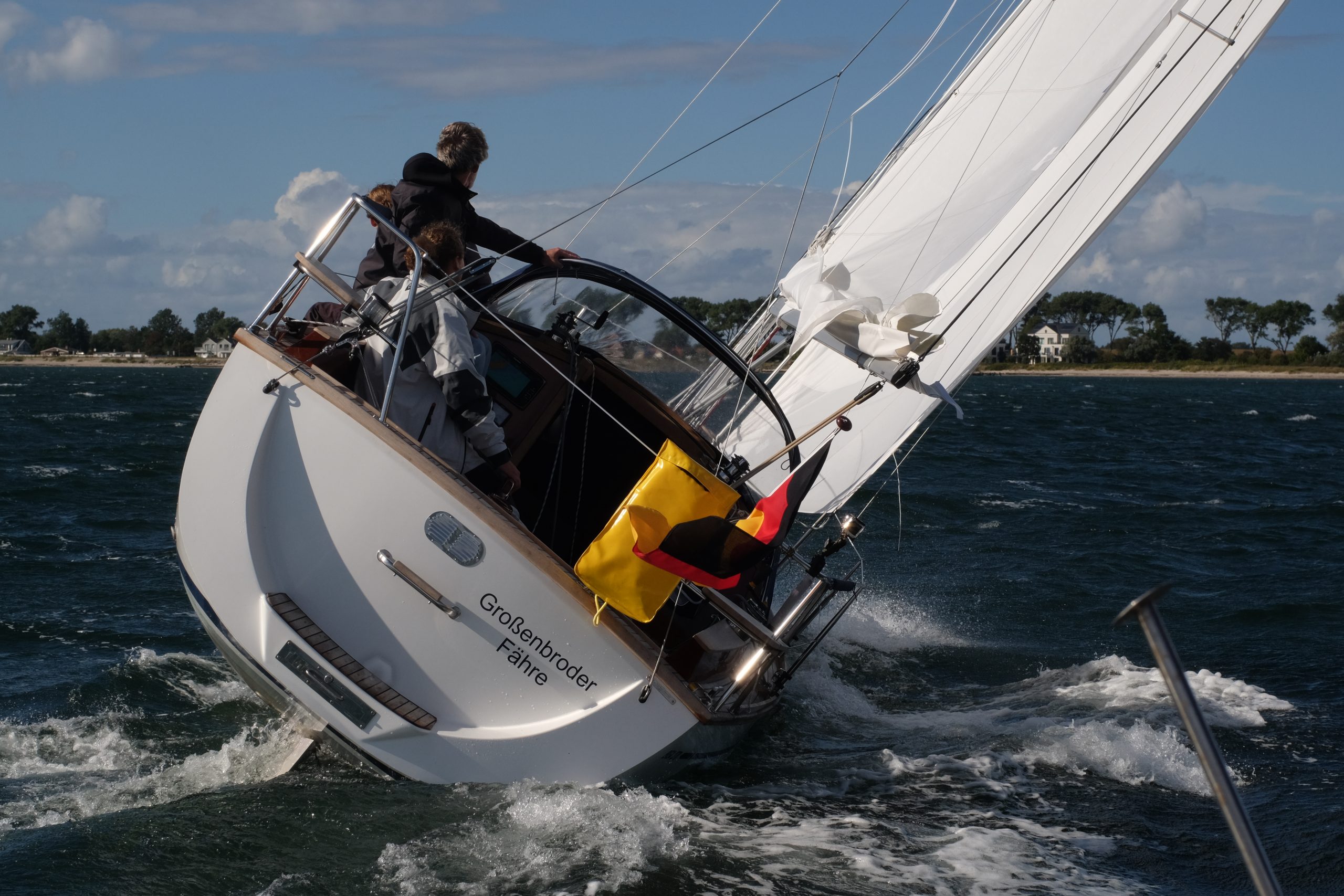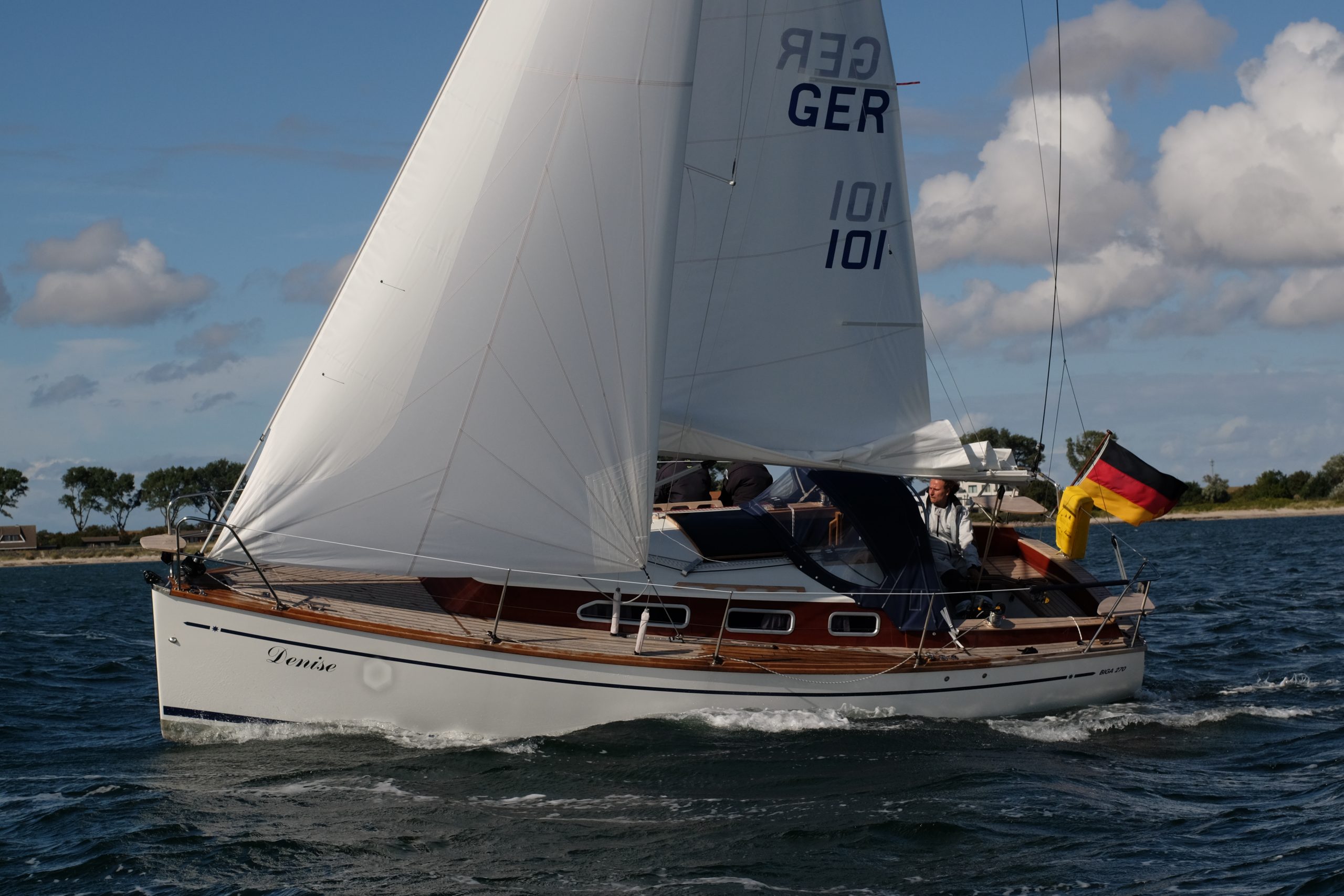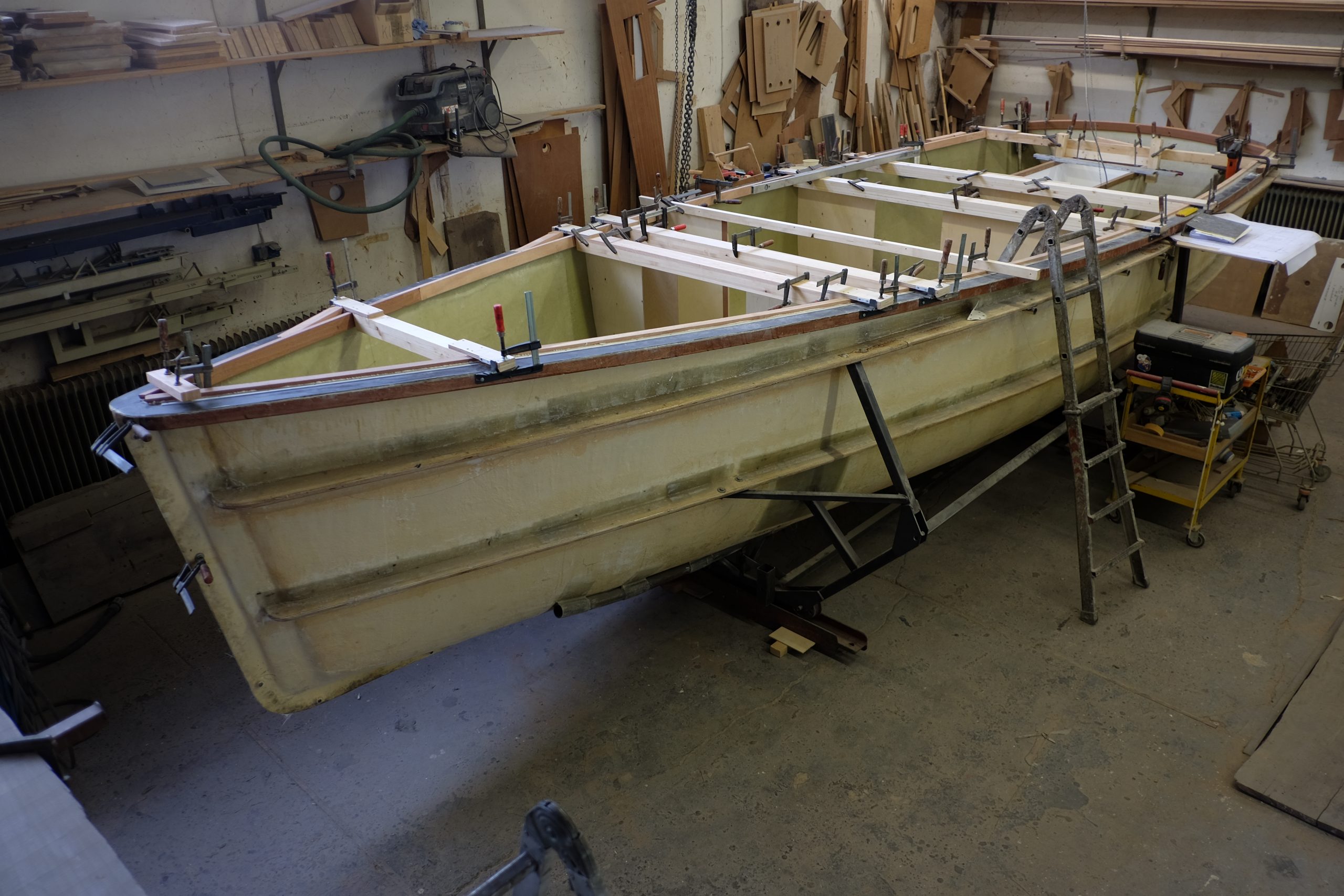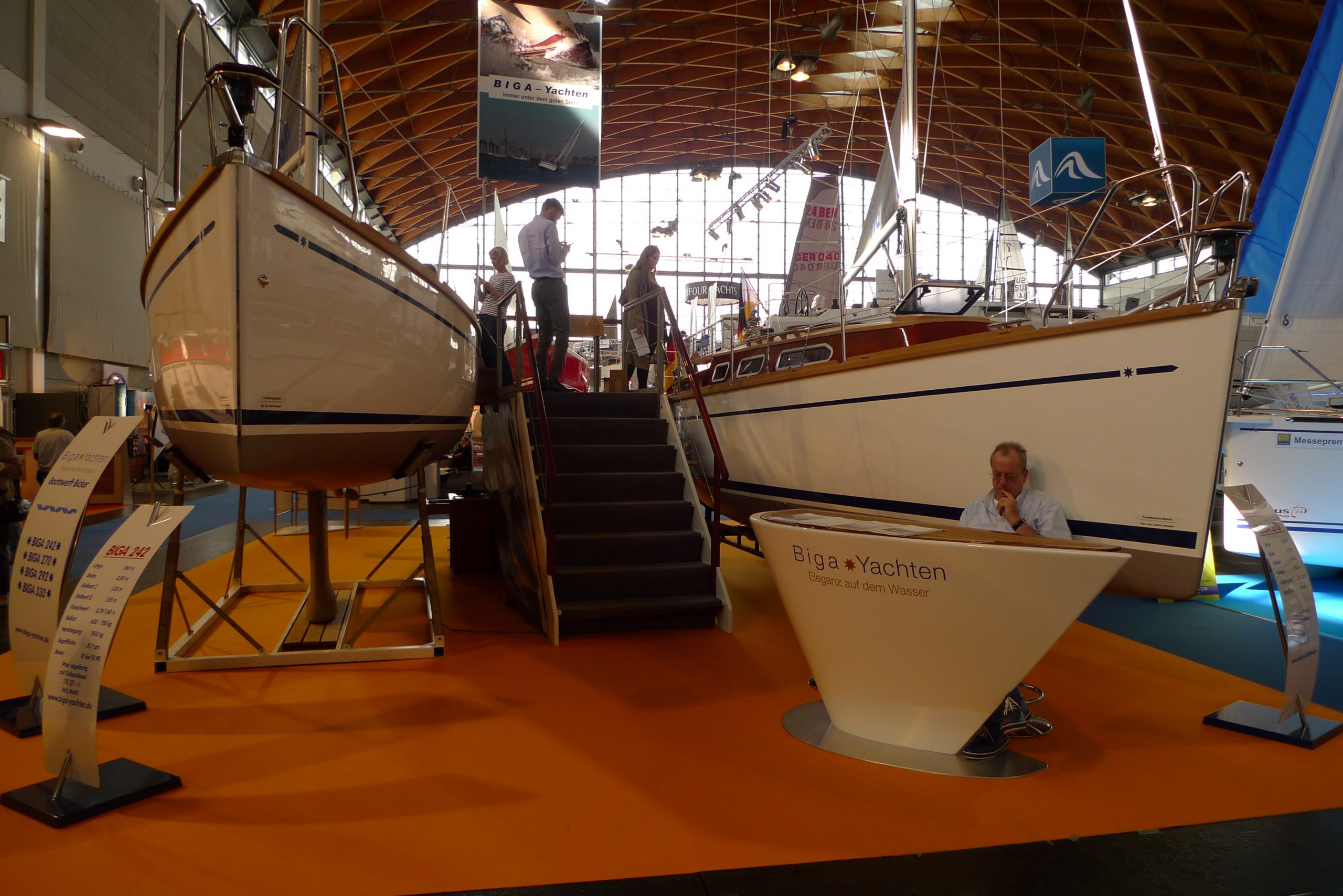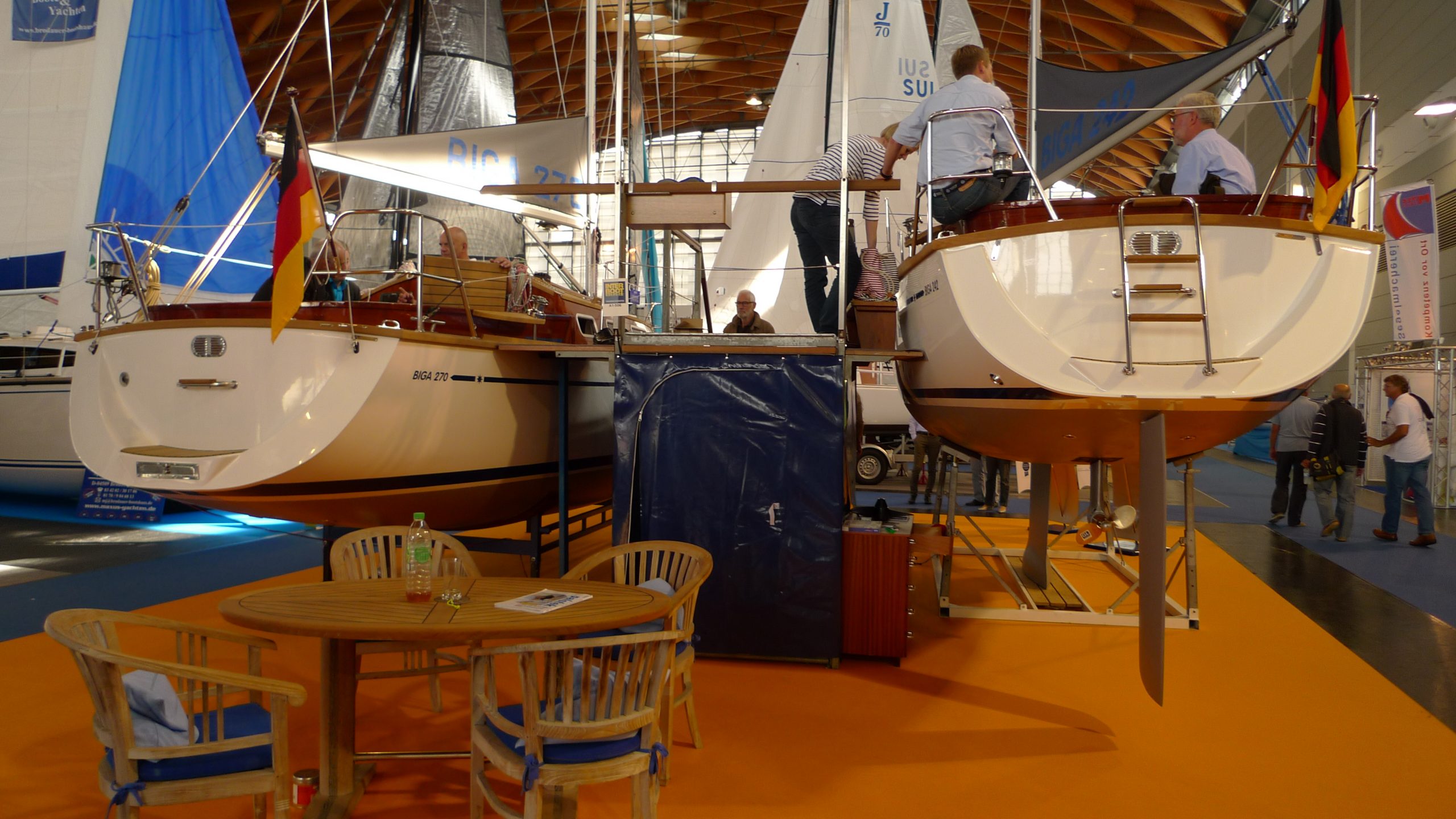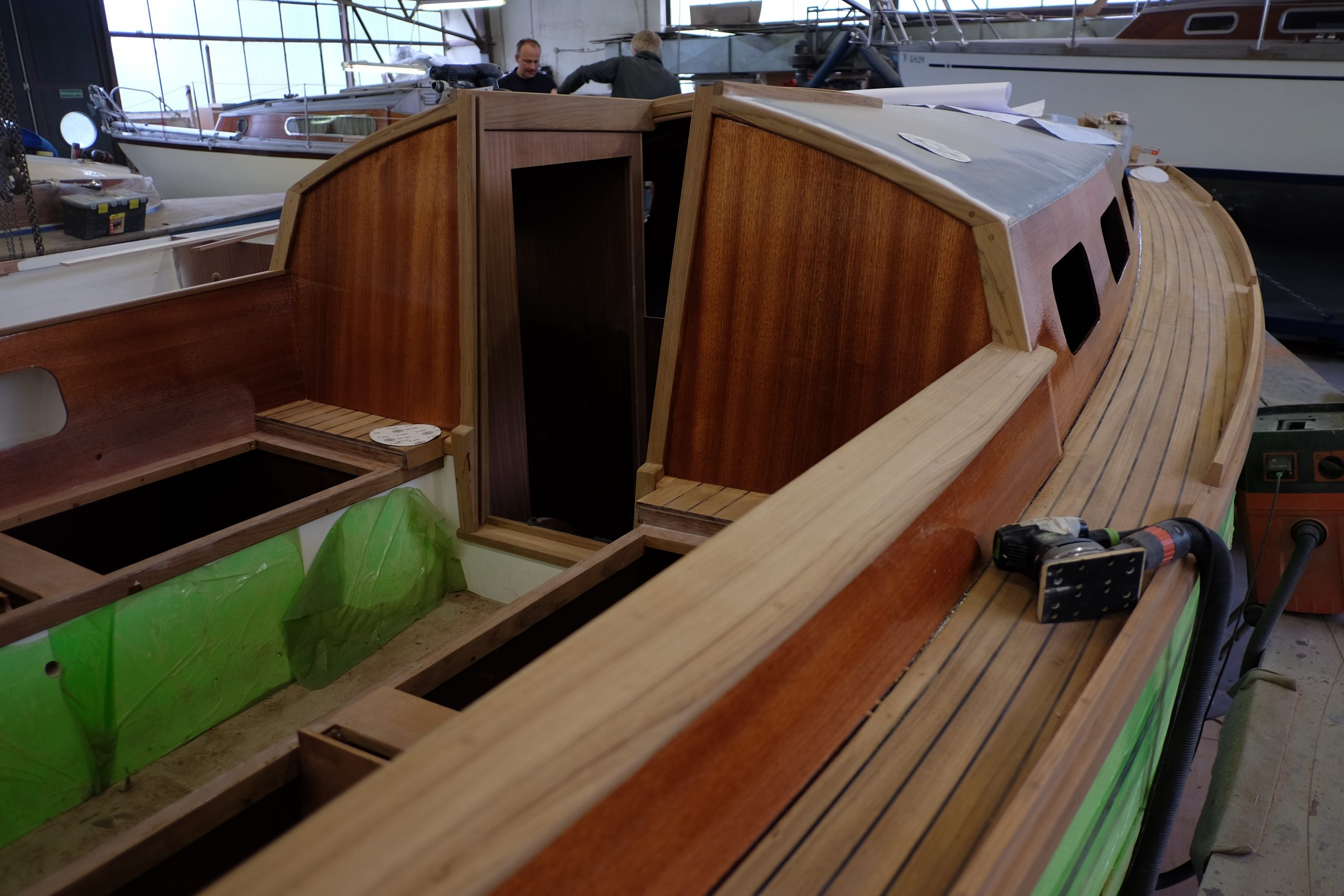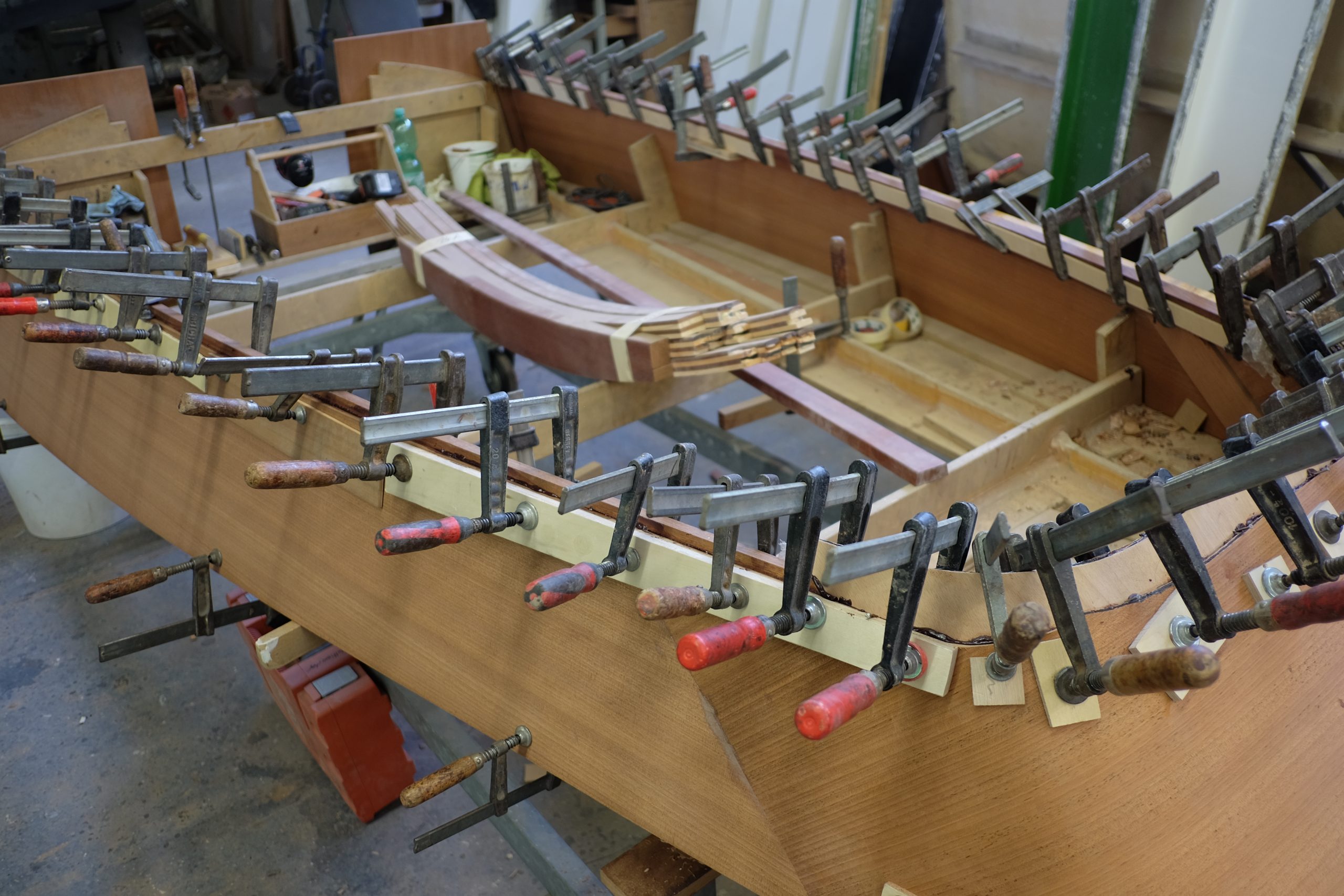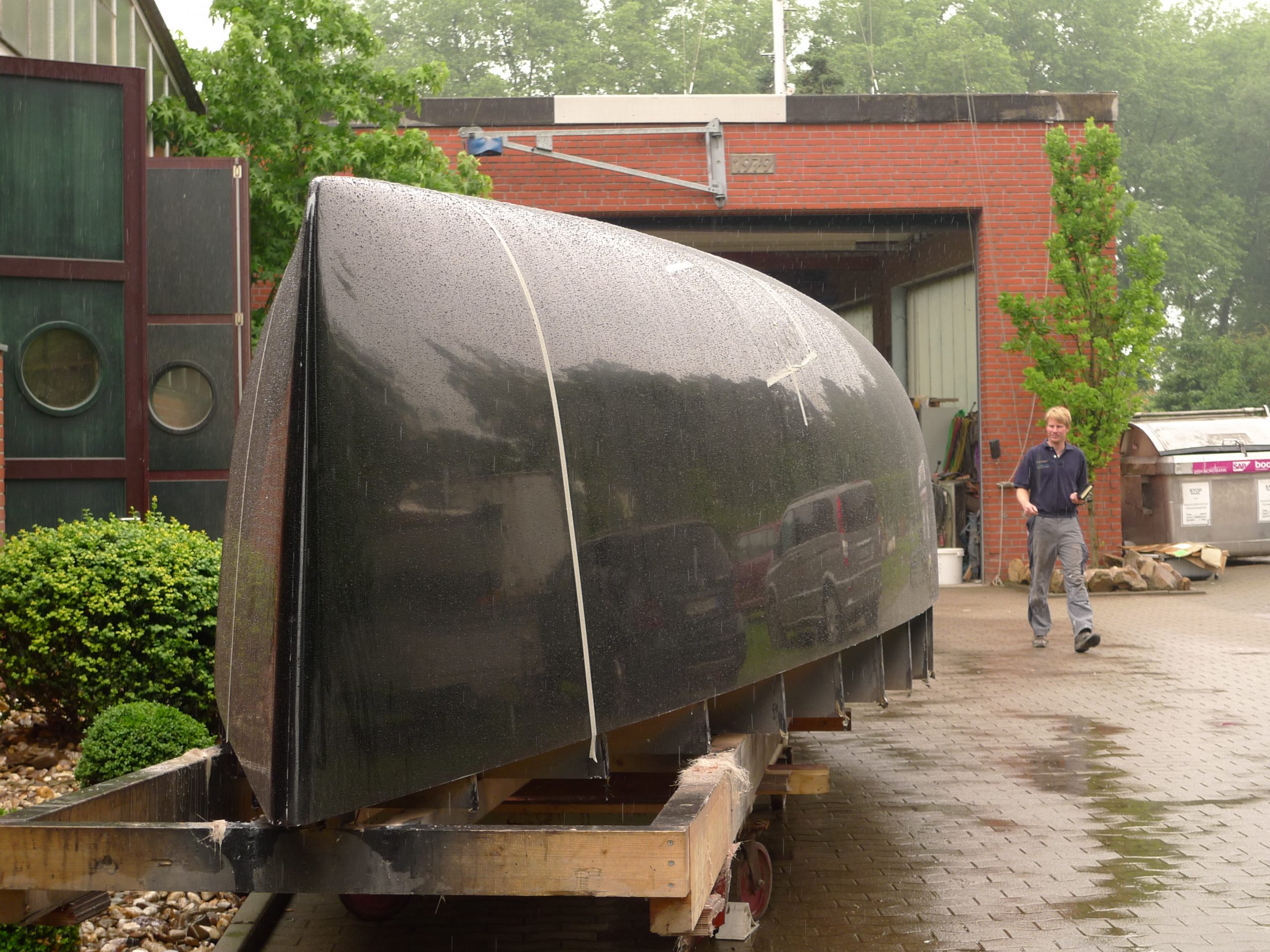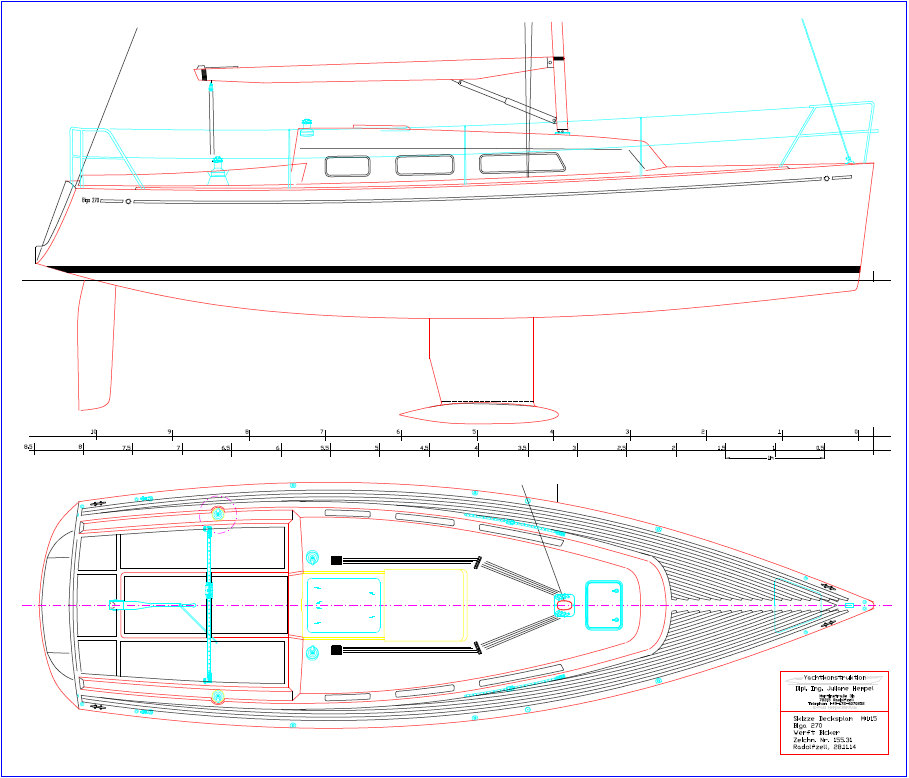The Biga 262, which was built for many years, is now being replaced by the modern, 50 cm longer and 70 cm longer LWL Biga 270.
After the great success of the Biga 242, customers asked for a similar but slightly larger boat with a headroom of 1.80 metres.
The new Biga fulfils the desire for a fast boat, but which, thanks to its harmonious lines, has sufficient stability (righting moment) similar to its smaller sister, the Biga 242, and is very balanced on the rudder. She will be easy to steer even when heeling.
The waterlines run into the stem at a sporty acute angle, but they still offer enough surface area to prevent the boat from becoming too slender.
The same applies to the stern, which offers sufficient buoyancy, but the lines are not too full so that the yacht does not have too much frictional resistance in light winds.
Great importance was attached to offering the customer a fast but easy-to-sail boat. It has sufficient sail area, as boats of this size are often used in inland and light wind areas. Nevertheless, she is not an extreme boat but is easy to handle in both light and strong winds.
With its weight and width of 2.50 metres, the new Biga 270 will of course be trailerable with a suitable towing vehicle.
Particularly noteworthy are the three draught variants, such as the modern and very effective standard keel with lead bulb, which goes 1.45 metres deep.
A moderate fixed keel as a second variant will enable a draught of just 1.10 metres and and the third option is a keel centreboard to serve draught-restricted areas such as Lake Neusiedl or the Steinhuder Meer.
The modern rig, rigged approx. 9/10ths with approx. 20° swept spreaders.
The new hull of the Biga 272 is made entirely in-house at Bicker from full laminate under water and Sanwich in the freeboard area (vacuum injection process).
A plywood deck with teak straps is laid on top of a classic teak straps. The superstructure is made of natural varnished mahogany.
Naturally, the 270 offers sufficient interior space and, in line with the Bicker philosophy, various interior fittings. Individual wishes are also catered for.
Two interior variants are offered: the classic version with longitudinal berths and toilet room on the port side and the galley on the companionway.
Then the dinette version popular with customers, i.e. the saloon benches facing the direction of travel on port and the galley on starboard opposite.
Behind this is the dog bunk. Both versions with a spacious double berth in the foredeck behind the collision bulkhead. A large anchor locker in front.
Commentary on the keel variants
The new Biga fulfils the desire for a fast boat, but with harmonious lines and sufficient stability (righting moment) similar to its smaller sister, the Biga 242, it is very balanced on the rudder. It is easy to steer even with increasing heel.
The waterlines run into the stem at a sporty acute angle, but they still offer enough surface area to prevent the boat from becoming too slender.
The same applies to the stern, which offers sufficient buoyancy, but the lines are not too complete, so that the yacht does not have too much frictional resistance and ‘sticks’ in light winds.
Great importance was attached to offering the customer a fast but easy-to-sail boat. It has sufficient sail area, as boats of this size are often used in inland and light wind areas. Nevertheless, she is not an extreme boat but is easy to handle in both light and strong winds, and this applies to both keel variants.
As you can see in the drawing, the moderate short keel with T=1.15m has sufficient surface area so that it does not become a ‘leeward runner’ on the wind.
The difference to the deep keel with 1.45m is that the bomb must be somewhat heavier to provide sufficient righting moment. Naturally, the centre of gravity of the deep bulb keel is lower.
The deep bulb keel is an ultra-modern T-keel with a fibreglass fin from a negative mould (which otherwise only expensive one-offs or regatta yachts offer) and the lead bulb (not a cheap iron keel) was cast from a milled mould for both variants.
The deep keel has the better aspect ratio and you must not forget that the rudder goes deeper. If you have limited draught, then the 1.15 m keel is an excellent solution; if you have a choice depending on the area, you will choose the deep keel.
It is not possible to give a percentage, too much depends on the sails and the trim. Downwind you have small losses with a 1.15m keel, but downwind you have small advantages again, as the keel does not go as deep, you have less drag (dynamic drag and mould drag) despite the longer profile.

